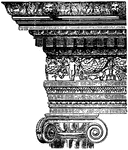Clipart tagged: ‘Ionic’
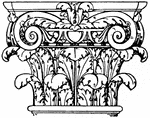
Roman Composite Capital
The Roman composite capital is a fusion of the ionic and corinthian capitals.

Volute of the Corinthian Capital
"A kind of spiral scroll used in Ionic, Corinthian, and Composite capitals, of which it is a principal…

Volute of the Ionic Capital
"A kind of spiral scroll used in Ionic, Corinthian, and Composite capitals, of which it is a principal…

Ionic Capital
The ionic capital is a design of a scroll rolled on both sides with spiral curves. It is found in Bassae,…

Ionic Capital
The ionic capital is a design of a scroll rolled on both sides with spiral curves. It was found in Pompeii.
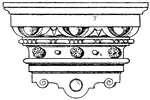
Renaissance Console
This Renaissance console is a German design found in a castle in Baden-Baden. It imitates the Doric,…
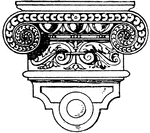
Renaissance Console
This Renaissance console is a German design found in a castle in Baden-Baden. It imitates the Doric,…
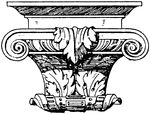
Renaissance Console
This Renaissance console is a German design found in the Heidelberg castle. It imitates the Doric, Ionic…
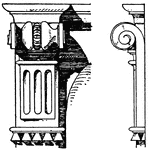
Renaissance Console
This Renaissance console is shown in its front and side view. It is a Late French design that is a Triglyph-console.
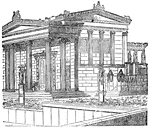
Erechtheum restored
"The building of the new Erechtheum was not commenced till the Parthenon and Propylea were finished,…
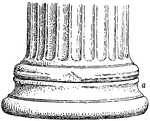
The Base of an Ionic Column at the Erechtheum
The base of the column, torus, displays a concave molding called a scotia. This type of base was not…
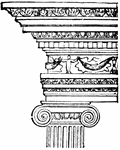
Ionic Order
One of the three orders of classical architecture. It originated in the mid-6th century BC.

Ionic Pilaster Capital
The Ionic pilaster capital is a French Renaissance design. This pilaster is broader in proportion to…
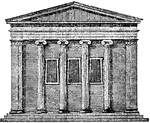
Tetrastyle
"Elevation of a Greek Ionic attached Tetrastyle in Antis." — Encyclopedia Britanica, 1893
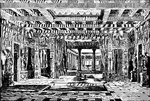
The Interior (Atrium and Peristylium) of Pansa's house at Pompeii, Restored
Illustration of a restored atrium and peristylium of the House of Pansa at Pompeii. The impluvium, pool,…



